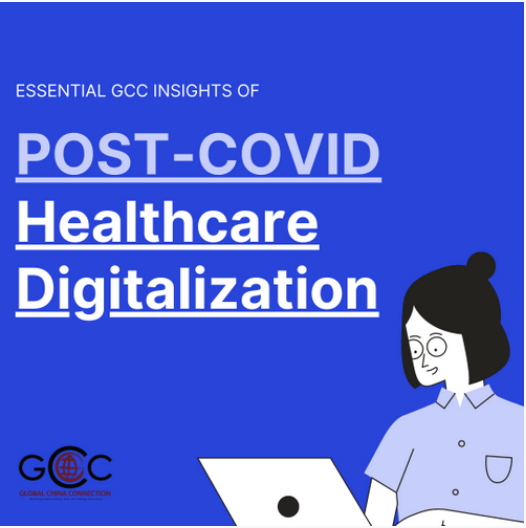In the past few years, the healthcare industry has been slower to digitize than other industries due to challenges such as consumer’s distrust of online medical services. However, as consumers’ daily consumption habits gradually shift from offline to online, the public has become more receptive to the digitalization of the healthcare industry, and the pandemic has accelerated this process.
What is the specific form of digital healthcare?
According to McKinsey, there are three categories of online medical software: telehealth, digital therapeutics, and care navigation. Of these, telemedicine moves offline meetings between doctors and patients and hospitals to online. Doctors and patients can meet synchronously (e.g., via video) or asynchronously (e.g., by exchanging and communicating the patient’s health check-ups). Telemedicine brings convenience and more choices to consumers. According to a report based on 50 patients in Illinois, biometric-enhanced video encounters have comparable levels of safety and quality than offline encounters. According to another report, online physician-patient encounter services were 17% less expensive than offline encounters. This shift may allow more people, including those living in rural areas and those with lower income, to better take advantage of the healthcare system.
Another trend is digital therapies, which involve the use of softwares to understand conventional treatments and the appropriate medications to prevent and treat symptoms, as well as to monitor drug side effects. Seventy percent of healthcare organizations are expected to increase their investment in this industry in the next five to 10 years, second only to telemedicine.
Consumers will also be able to access reports on their personal health data through online platforms and learn about the costs and expertise of each provider. The number of organizations investing in this field is expected to be quite high, with nearly 80%.
Thus, it is clear that healthcare digitization is an essential trend in the healthcare industry. Because of the pandemic, this trend will continue to grow even faster.

The Impact of COVID on Healthcare Digitalization
As countries around the world are under massive lockdown due to the COVID-19, it has become essential to move from offline to online doctor-patient meetings. Because of this pandemic, both patients and physicians have become more trusting and accepting of online treatment options. Before the pandemic, 11% of patients used telemedicine services; now, 76% of consumers are willing to use telemedicine, while 70% of offline doctor-patient meetings have been canceled in the same period. As of May 2020, remote physician-patient encounters have increased 175 times from pre-pandemic levels. Of those doctors, 65% claim to be more optimistic about the telemedicine format than the pandemic.
Why digital health is so important?
Urgent care is an excellent area for telemedicine applications. It can help patients to reach care providers with minimum waiting time, which is especially helpful for elderly patients who are at risk for infections and other complications. It will also greatly improve the quality of care and experience for patients with chronic conditions. A survey of patients over the age of 50 with chronic conditions found that a large percentage of them would prefer to be seen remotely because it would be more convenient and quicker for them to see a doctor without waiting in line. The convenience of seeing a doctor would potentially increase the frequency of their visits and benefit their overall recovery. Considering that the U.S. spends 90% of its total healthcare expenditures on chronic diseases, and that rural populations are more likely to have chronic diseases which require more medical resources and care, the potential of telemedicine certainly should not be overlooked.
Trends in China
In the healthcare sector, China, like many other countries, is beginning to trust and embrace digital health services, but not with a focus on remote access.
According to Deloitte’s analysis on digital healthcare, offline public general hospitals are still the first choice for Chinese consumers, and online self-examination of symptoms is gaining more acceptance. For minor ailments (e.g., mild abdominal pain, migraines), consumers, especially the emerging middle-class, have a stronger need for self-checking, and they demand a reliable channel for online symptom self-checking and self-medication to reduce the need to travel to the doctor.
The report also found that middle-class consumers are more receptive to digital healthcare services. In addition to digital medical services such as online consultation, consumers expressed willingness to try digital screening solutions such as home medical testing devices (glucose meters, home ECG machines, etc.).









